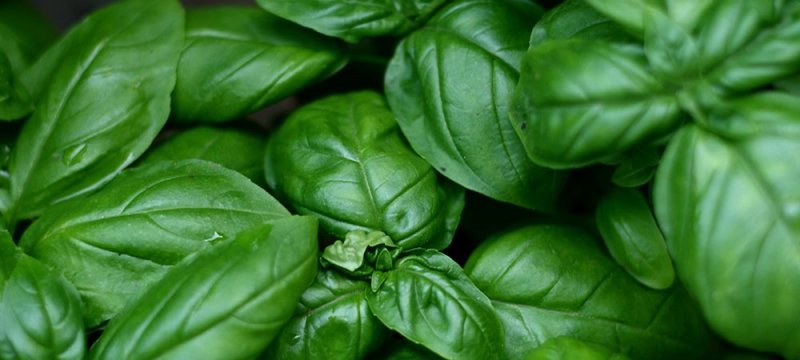Basil can be grown indoors year-round with the right attention and placement, and growing it yourself will save you some money at the grocery store if you’re one to use the herb liberally in your cooking. Simply follow these steps for growing fresh basil in your home, and you’ll have your own continuous supply in no time.
What You Need To Grow Basil

When thinking of growing basil in your home, it’s important to find the right soil. Look for a soil that’s made for growing seeds, as it is loaded with nutrients and you won’t have to add a fertilizer for at least six weeks.
One packet of basil seeds will provide plenty of plants. There are many types of basil that can be used for cooking, including sweet basil, Genovese basil, Thai sweet basil, cinnamon basil, lemon basil, lime basil and purple basil. When determining which type of basil to grow, factor in your cooking needs — you can always grow multiple varieties in different pots.
Pots for growing should be around four to six inches in diameter. Make sure the pots have drainage holes either on the sides or the bottom to prevent the roots from becoming clogged with water. If you don’t have a spot to keep your plants inside your home that gets a lot of sunlight, it might be best also to purchase a grow light, as basil grows best in warm and sunny conditions.
Growing Your Basil Plants
Now it’s time to get your hands dirty and start the process of growing your basil indoors.
Step 1: Planting The Basil Seeds

Pack the moist potting mix tightly into the pots, leaving some room at the top. In the palm of your hand, sprinkle some seeds over the surface of the soil in the pots. Now lightly cover the seeds with more soil. Press down gently on the top layer of soil and delicately water it. If you don’t want to risk overwatering your basil, use a mister.
Step 2: Plant Placement

Place your pot next to a window. Basil plants should be kept warm and get at least sixhours of sunlight per day. Avoid placing it near an air conditioner or any place where a draft is present, as cold air can kill basil plants. Once the plant begins to grow and begins sprouting out of the soil, start rotating the pots. The basil will grow toward the sunlight, so turning the pots will keep them growing straight.
If you are using a grow light, make sure the light stays on for around 14 hours per day. The light should be placed only a few inches above the pots at first. As the basil grows, raise the light so it is always a few inches above the tops of the plants. Keep an eye out for white spots on the basil leaves — this means the light is too close to the plant.
Step 3: Make Sure The Soil Is Always Moist

It’s important to keep the soil moist at all times. If the plants are too wet or overloaded with water the roots will rot. Likewise, if the soil gets too dry, the basil plants will wilt. Attending to your plants properly and using a pot with good drainage will help prevent overwatering.
As the leaves of the plant start filling in, they can suffer from overcrowding if there are too many. Cut off the extra leaves to make room — you can also use these leaves as fresh basil in your cooking, although they won’t have achieved their full flavor yet.
Step 4: Harvesting and Upkeeping Tips

About three to four weeks after planting, you can expect the basil’s fragrance and flavor to become more prominent. You should be able to smell it by running your hands lightly over the leaves. After two months, the basil plants should be flourishing.
If the leaves begin turning a pale green, then the plants are not getting enough nutrients. Use a liquid fertilizer to help them return to normal.
If you see flower heads, make sure to cut them off right away, or the leaves will not grow as prominently. Another way to keep your basil plants full is to harvest them frequently — the more you harvest, the more it will grow. A frequent harvest will also keep the plants bushy instead of tall and thin. Twelve basil plants will yield between four and six cups of leaves per week if the leaves are regularly picked. If you find yourself with more basil leaves than you can cook with, you can freeze them in resealable bags — frozen basil won’t lose any of its flavor when thawed again.
